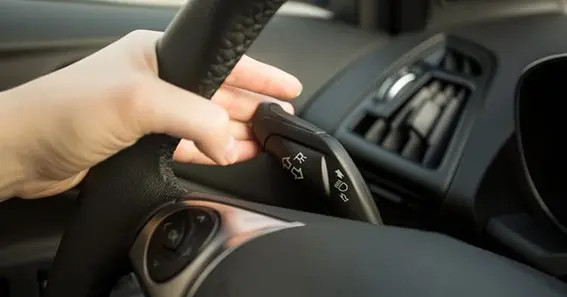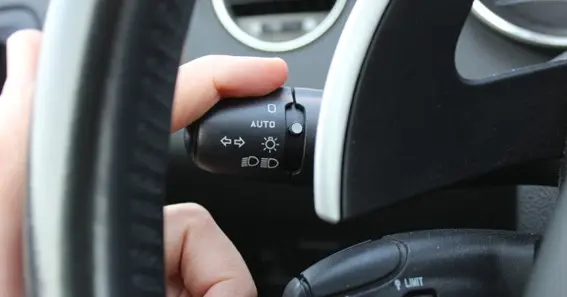Have you heard about what is hitting a blinker? It commonly relates to the process of signalling a vehicular turn through the use of the turn signal indicator. There is the activation of the car’s turn or blinker signal sign to notify others of your intention to change lanes or turn.
What is hitting a blinker?
Hitting a blinker is to switch on the turn signal of a vehicle. It also describes polite and civil traffic behaviour. Through the use of turn signals, vehicle operators do not increase their personal safety, but rather they improve the safety of the traffic to everyone else by letting them know what they will be doing next. This leads to cooperation among the traffic users and people on the road which is valuable in managing traffic and reduces incidents of confusion on the road. Here you get the information about What is hitting a blinker?
In addition, striking a blinker is not just a legal obligation in various states but it is also an important aspect of defensive driving as it helps the driver in identifying potential danger and responding to it as early as possible. In short, it is a minor and yet thought-provoking gesture that encourages the safest driving practices on the road. It means the operation of the indicator light switch in a car in view of flicking or pressing any lever or button which may be provided in the steering column or the dashboard of the car.
Activation Process of Hitting a blinker

Let us know what is hitting a blinker? and the activation process of hitting a blinker:
Mechanism:
This is usually located on the left side of the steering wheel in countries with left-handed traffic and countries with right-hand traffic on the right side of the steering wheel.
Directional Selection:
The mechanism through which a driver operates to ‘hit a blinker’ is by simply bringing the lever up if they are to turn or change lanes right and conversely by either pulling down or sliding it down if the person intends to turn or change lanes to the left.
Indicator Lights:
The first action to take is to turn on the lever; a corresponding blink is then activated on the vehicle which illuminates the adjacent vehicles to indicate that the driver is planning to turn or change lane.
Purpose and Importance of Hitting a blinker
Following explains about What is hitting a blinker? and the purpose and importance of hitting a blinker:
Communication:
To focus on or to hit a blinker is a basic part of safe driving as it helps to alert other road users ranging from pedestrians to cyclists and drivers of an incoming vehicle regarding its direction.
Safety:
Through such a move, drivers provide the road users adequate opportunity to prepare for varying manoeuvres by the other drivers, minimizing the frequency of unusual collisions and accidents.
Legal Requirement:
States many a time make use of the turn signals a legal necessity during turns, changing lanes, merges and pull-over cases. If they fail to do so, they may find themselves committing traffic offences and paying fines.
Timing:
Drivers must put on signals before a turn or switch lane about 100 ft or 30 m before the turn or lane change.
Consistency:
All drivers should adopt foot signals that are continuous and watch for the turn signals until the activity is concluded.
Courtesy:
Drivers should wear blinkers regardless of other motorists’ presence to create an environment that promotes responsible road users.
Consequences of Not Using Blinkers
Following are the points which explain the consequences of not using blinkers:
Confusion:
This can create confusion on the part of the other motorists and result in misunderstanding and or road rage.
Legal Ramifications:
Besides the dangers already mentioned, this may also lead to violation of traffic regulations and receiving penalties for this in this or that legal system as using blinkers is considered illegal almost everywhere.
Reduced Predictability:
Since cars do not use turn signals, motorists also do not know what the other person is planning, so the chances of encountering an accident or traffic jam are high.
Conclusion
So, What is hitting a blinker? Turning on a blinker is a simple yet highly meaningful activity in terms of fostering safe and optimal driving. It acts as a powerful means of communication in the traffic centre informing drivers and walkers that the latter intends to change his/ her direction or change the lane. Turn signals then play a role in ensuring that other drivers behave in a cooperative manner or predictably by signalling that the conditions are about to change. Yet, it is not only a matter of courtesy because it is illegal in several countries to drive without blinkers and it may lead to fines.
The utilization of blinkers is also a very good practice and one shows how a driver takes due care of others by acting responsibly. Failure to use turn signals has a reverse effect and can be confusing, dangerous and sometimes illegal, this results in being unpredictable to other road users and even to the police. In other words, pressing a blinking light button may appear to be a gesture but its implication in the overall road safety and traffic efficiency cannot be ignored.
FAQ
How do we define the term hitting a blinker?
Even the term “hitting a blinker” reflects that in telling the cars ahead of you that you want to turn.
Why is it important to hit a blinker?
The importance of hitting a blinker in order to express information about the plans to other participants in the traffic movement, to promote safe driving and avoid accidents.
Is using blinkers compulsory?
The use of turn signals is normally an essential part of the law when turning right or left or passing or when stopping at dispensing places. The point has been made that failure to use blinkers will lead to traffic violations and fines.
When should blinkers be engaged before making a turn or changing lanes?
It is advisable to engage blinkers within a distance of about 100 feet or 30 meters before initiating a turn or lane change to ensure that other motorists can have sufficient time to allow you a turn or switch lanes.
What happens when there is no use of blinkers?
The failure to wear blinkers can cause confusion to other traffic users; the failure to use blinkers can result in legal problems, and the failure can further result in making the road less predictable for traveling, which may result in traffic congestion and accidents.
What Is The Significance Of Hitting A Blinker?
Here are why you should hit a blinker
- Better Communication
- Safety
- Legal Requirement
- Timing
- Consistency
- Courtesy
Sources
https://www.vblawgroup.com/blog/firm-news/why-do-drivers-fail-to-use-their-turn-signals






